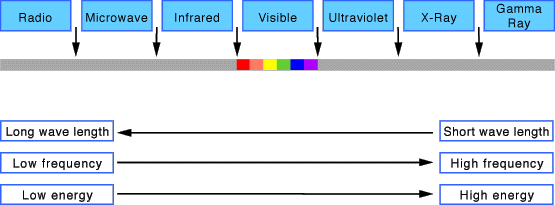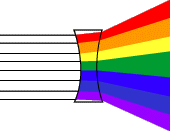Sense and Perception: Free Family Day
Sat. July 26, 1-4 pm
How do we see, hear, or smell? How does how we see affect what we see?
How does the quality of light change our perception? Join us as we examine
the nature of sense and perception. Step into a room glowing with light:
how does this experience change the way you see? Explore the mysteries
of a camera obscura and participate in hands-on activities related to
light, sight, and how our eyes and brain work.
Activities:
How do we see & How does how we see affect what we are seeing?
Nature of Light
A light wave consists of energy in the form of electric and magnetic
fields. The fields vibrate at right angles to the direction of movement
of the wave, and at right angles to each other. Because light has both
electric and magnetic fields, it is also referred to as electromagnetic
radiation.
Nature of Color
Light waves also come in many frequencies. The frequency is the number
of waves that pass a point in space during any time interval, usually
one second. It is measured in units of cycles (waves) per second, or Hertz
(Hz). The frequency of visible light is referred to as color, and ranges
from 430 trillion Hz, seen as red, to 750 trillion Hz, seen as violet.
Again, the full range of frequencies extends beyond the visible spectrum,
from less than one billion Hz, as in radio waves, to greater than 3 billion
billion Hz, as in gamma rays.

How
Light Works
by Craig Freudenrich, Ph.D.
http://science.howstuffworks.com/light.htm
Vision and the eye
When light enters the eye, it first passes through the cornea, then the aqueous humor, lens and vitreous humor. Ultimately it reaches the retina, which is the light-sensing structure of the eye. The retina contains two types of cells, called rods and cones. Rods handle vision in low light, and cones handle color vision and detail. When light contacts these two types of cells, a series of complex chemical reactions occurs. The chemical that is formed (activated rhodopsin) creates electrical impulses in the optic nerve. Rhodopsin is a mixture of a protein called scotopsin and 11-cis-retinal -- the latter is derived from vitamin A (which is why a lack of vitamin A causes vision problems). Rhodopsin decomposes when it is exposed to light because light causes a physical change in the 11-cis-retinal portion of the rhodopsin, changing it to all-trans retinal. This first reaction takes only a few trillionths of a second. The 11-cis-retinal is an angulated molecule, while all-trans retinal is a straight molecule. This makes the chemical unstable. Rhodopsin breaks down into several intermediate compounds, but eventually (in less than a second) forms metarhodopsin II (activated rhodopsin). This chemical causes electrical impulses that are transmitted to the brain and interpreted as light
Activities:
· Afterimages
· prism - splitting white light into its component wave lengths
· Complimentary colors
· Stereo scope / phenakistoscope
· obscura - redirected rays
· Figure / ground
· ?(Zoetrope / flip books)
· paper air planes / constructions which illustrate the atmospheric
density
Topics:
· Development = Vision on atmospheric conceptions
· Brain Activity = retinal images interpreted
· Color = reflective qualities / cone chemistry
· Depth/Distance = luminance, contrast- rod activity
· Motion = luminance, contrast
· Contrast = luminance
Persistence of Vision
Finger animations
Color Blends
Lenses - bending light rays/ virtual and real images
When light rays reach an angulated surface it causes the light rays to bend. This is called refraction.
Light passing through a convex lens, the light rays bend toward the center:

Light passing through a concave lens, the light rays bend away from the
center:

Concave
Convex
Mirrors
Broken straws
Prisms - splitting light into the visible spectrum
Bluesky
water prism
Spectrum
Waves
Obscura
Real Images
Cameras
The eye
Reading/Materials List: